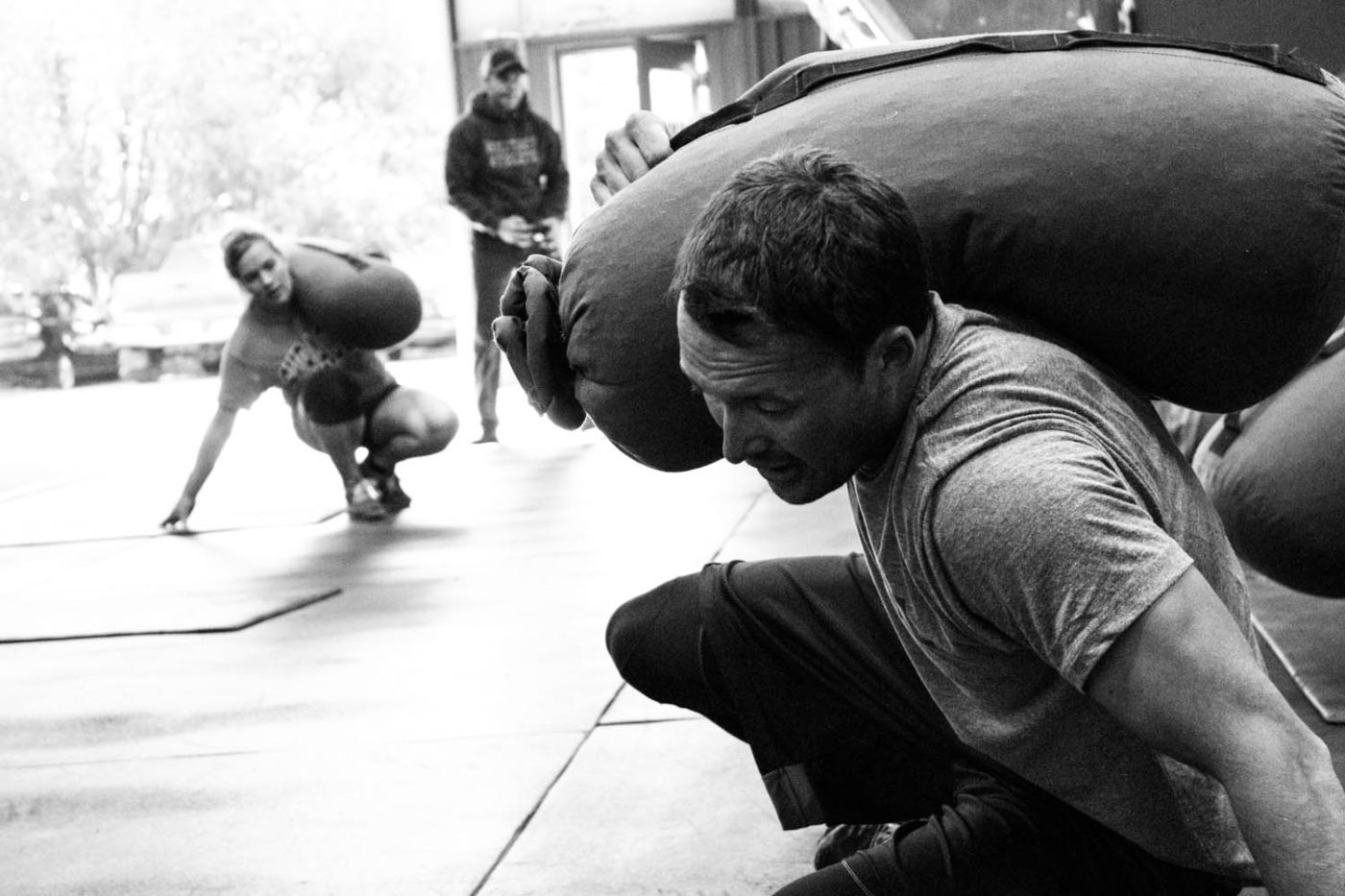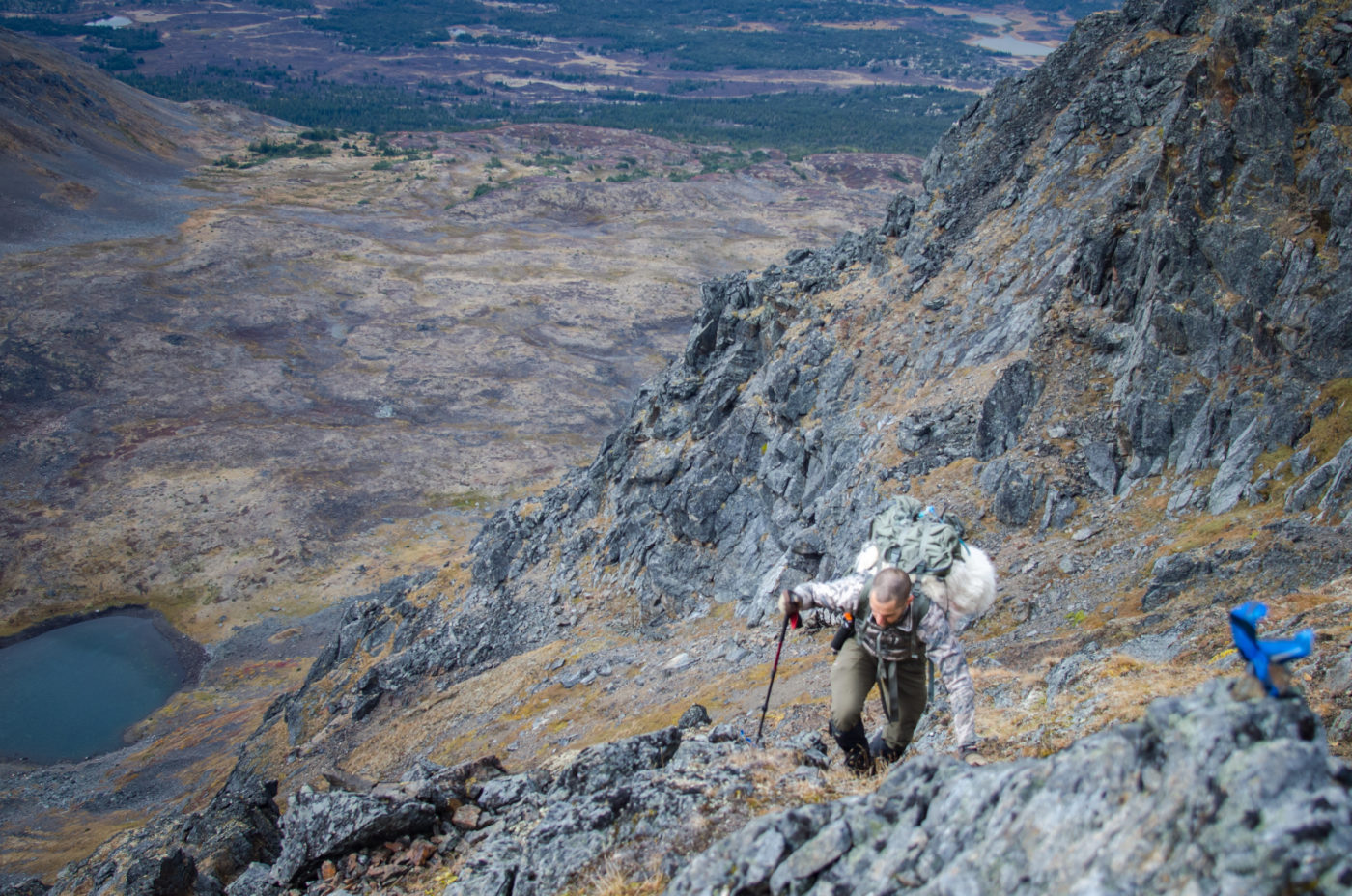Specificity is training to accommodate the unique demands of your task. For the mountain hunter and athlete that task is bustin’ ass through the unforgiving wilderness. There are unique demands to this pursuit and when we consider them all, we can utilize specific training modalities to maximize our performance.
There are SIX principles that one needs to consider in the discussion of training specificity, they are:
Range of Motion (ROM) and the Direction of Motion
This is where most athletes spend their time adding specificity to their exercise regime. For example, sprinters would mostly focus on partial squats, powerlifters parallel squats, and Olympic weightlifters full range of motion squats.
Each sport has its own unique demands when it comes to joint range of motion. For the hunter, we want to look at each joint and optimize its strength and stability within this range. Let’s start with the most common activity for the hunter: walking/hiking.
Walking probably makes up 99% of your activity. You likely have a pack and you are likely also covering gnarly terrain so we want to assess the demands of this activity as it applies to your environment.

You’re obviously going to experience lots of steep and steady uphills which puts us into hip-flexion moving towards extension (more on this important factor later). Our best gym replication for this is the deadlift. On the downhills, you’re going to be heel striking and going from knee extension towards knee flexion. Our best gym replication for this is the squat.
The heavy weight of your pack is going to challenge your rotary stability as you move through the gait cycle so you’ll want to make sure you have solid control in rotation and anti-rotation.
Lastly, through the gait cycle, you’re spending most of your time on one leg. This means we want to do a lot of single-leg training, especially as we get closer to the hunting season.
Force Application Within the Movement
Imagine throwing a punch or swinging a bat, there is a sweet spot where maximal force is expressed. Uphill, downhill, sidehill, and flat ground hiking all have different accentuated regions of force production and we need to make sure we’re ready for those challenges when they present themselves.
The thing about backcountry hunting is that no matter how well you prepare, you’ll always encounter something you didn’t expect. For this reason, we make sure that in the gym, we train movements through a full range of motion. We can almost ignore specificity in this example because you want to be prepared for anything and everything – the unknown and unknowable. Utilize a large selection of full range of motion exercises and you will always have the ability to apply force where it’s needed.
Speed of Movement and the Force-Velocity Continuum
The force-velocity continuum is a curve where high speed and low force movements live at one end and low speed and high force movements live at the other.
Examples of high-velocity, low-force exercises are punching or throwing a baseball. Still relatively high-velocity, but also higher force are sprinting and jumps, as well as throws like javelin or shot put. Moderate velocity and higher force movements like kettlebell swings and Olympic lifts follow, and maximum load barbell lifts like squats and deadlifts round out low-velocity, high-force movements.
Being in the backcountry means that you don’t always know what you’ll encounter. Though you’ll mostly be walking at a low velocity and creating low-moderate force, there will be times when you are required to move quickly or apply lots of force. For this reason, it is best to train the entire spectrum of the force-velocity curve.
Rate of Force Development (RFD)
RFD is how efficiently we recruit muscle fibres for contraction. Imagine at the end of a movie, the theatre lights slowly illuminate from dark to dim then to full brightness. This analogy represents a low RFD. The light switches in your house represent a high RFD where the moment the switch is flipped, the lights come on at full brightness.
The value of training RFD for the mountain athlete is actually quite low. Although there are benefits to training explosive movements that go beyond developing RFD, high RFD is not something we need to prioritize as mountain athletes. This means we can save the energy we’d spend doing cleans, snatches, and high box jumps for something more valuable like single-leg and core training or more aerobic development.

Photo: Mountain Tactical Institute
Concentric vs Eccentric Demands and Implications
How the muscle is contracting is probably the second most important aspect to consider in your training as a mountain athlete.
As I mentioned earlier, we see a lot of uphill walking with a flexed hip moving towards extension. This is considered concentric hip extension. Concentric muscle contractions are when a muscle moves from a lengthened position to a shortened position. Our best gym movements that emphasize concentric hip extension are the kettlebell swing, deadlift, and hip thrust.
Downhill walking is the opposite type of muscle contraction, an extended knee moving towards flexion or eccentric knee flexion. Eccentric muscle contractions are when a muscle moves from a shortened position to a lengthened position.
The distinction here is important because most of our injuries are going to occur during the eccentric phase of a movement. Eccentric strength also has the ability to create significantly more force than concentric strength, meaning you can place a lot more load into the system using eccentrics. In other words, you can beat yourself up pretty badly with downhill hiking without even knowing it. Add a pack to that equation and you are opening up a big ol’ can of worms. Many of you reading this will know exactly what I’m talking about.
For the mountain athlete, prioritize controlling the eccentric portion of your lifts for a count of 2-3 seconds. It’s also best to hold that lengthened position for 1-2 seconds before performing the concentric portion of the lift.
Bioenergetics
This is both the fuel the body is utilizing and how it’s utilizing that fuel. The mountain athlete is going to be primarily relying on oxidative metabolism. This means oxygen is the catalyst for turning fuel, in the form of fat and carbohydrate, into energy. There are multiple pathways through which this can occur and some provide more readily available energy while others provide longer-lasting energy.
For the mountain athlete, we want to make sure our training emphasizes and maximizes this oxidative pathway so we are as powerful and efficient as possible. Year-round we should be focusing on moderate amounts of zone 1 or 2 work. This means our heart rate should stay steady between 100-130 beats per minute (BPM). Depending on your training phase (see previous article on periodization), aim for 1-3 sessions per week, and 30-60 minutes per session.
During certain training phases, you’ll want to include some higher intensity efforts in the form of circuits and intervals of 1-10 minutes in duration and even some sustained higher intensity efforts in the 20-60 minute range. This is considered zone 4 or 5 training.
So as you can see, if we’re going to optimally prepare for mountain and backcountry hunting, there’s more to this than just hiking with a pack. Especially when, for most of us, that can only happen once or twice a week and only at certain times of the year.
Ultimately, the discussion around specificity means more than trying to make your training look more like your sport. We need to dissect the primary demands of the sport as well as the secondary demands that are associated with training for it, such as the potential for injury, fatigue, and burnout.
Though strength and power aren’t, at first glance, cornerstones of performance for the mountain athlete, maintaining a requisite level in these areas definitely IS! Hiking year-round and calling that your training program is not the optimal approach.
Certain training blocks need to be designed to maximize different areas of performance so that we can achieve an ultimately higher level, year after year.
For the backcountry athlete, there is a huge element of the “unknown and unknowable” which means you need to explore many facets of training. Just because something doesn’t look like your sport, doesn’t mean it can’t or won’t be valuable. If you intentionally train for unexpected or unpredictable demands and situations, you’ll always be prepared.



